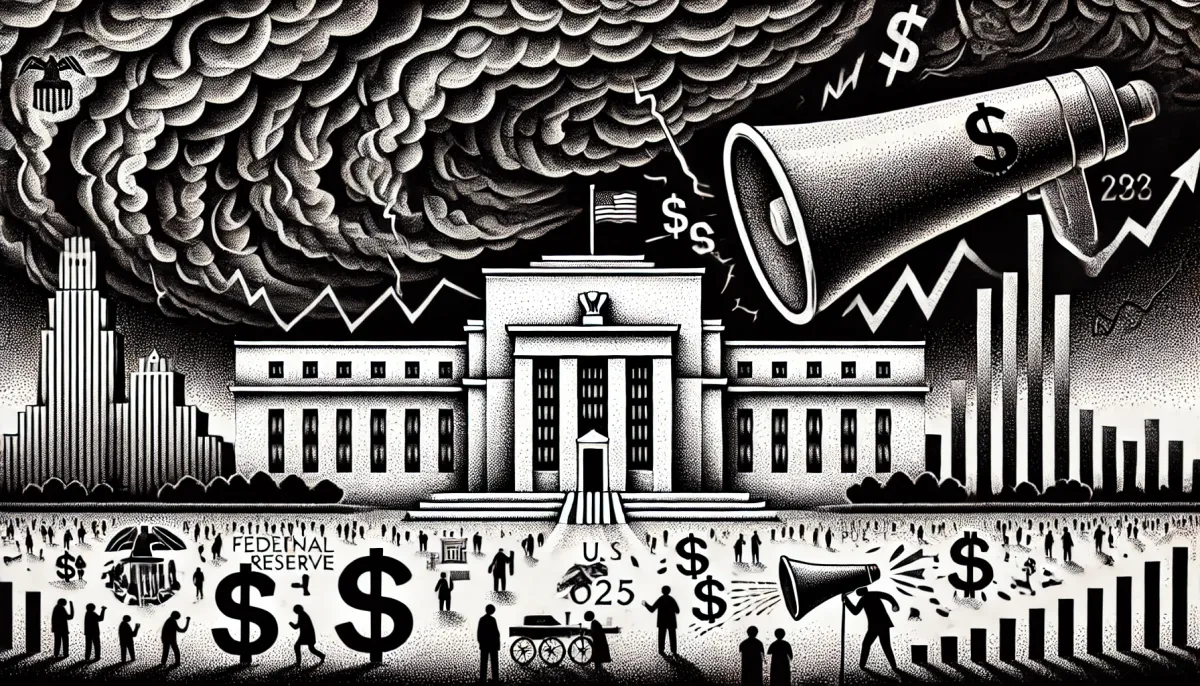March 2025 Macro Update: Fed Holds Rates, Trump Pressures Cuts, and Recession Risks Loom

The week of March 17–21, 2025, delivered a whirlwind of macroeconomic signals—some reassuring, others raising red flags. From the Federal Reserve holding interest rates steady, to Donald Trump once again testing the boundaries of central bank independence, to mixed investor sentiment driven by global trade tensions—the economic landscape is anything but boring. Here's what top strategists, investors, and policy watchers need to know right now.
🏦 Fed Holds Rates Steady, Tightens Balance Sheet Strategy
On March 19, 2025, the Federal Reserve announced it would maintain the federal funds rate at 4.25%–4.50%, taking a cautious stance in light of ongoing inflationary pressures. Despite strong GDP growth and stable unemployment, inflation remains above the Fed’s 2% target.
Notably, the Fed also plans to scale back its balance sheet reduction program: the cap on monthly Treasury security redemptions will drop from $25 billion to $5 billion starting in April. Mortgage-backed securities caps remain unchanged at $35 billion. This signals a shift toward long-term stabilization over rapid tightening.
Key Quote: “Inflation remains somewhat elevated… [we’re] committed to the dual mandate of maximum employment and stable prices.” – FOMC Statement
However, not everyone on the committee agreed. Christopher Waller dissented, preferring no changes to policy—hinting at internal divisions over how aggressively to manage inflation versus growth.
🔗 Read the Full FOMC Statement
🗣️ Trump Pushes Rate Cuts—Again
In a familiar twist, Donald Trump took to X (formerly Twitter) on the day of the announcement, demanding immediate rate cuts. His argument? The economic burden of new tariffs—25% on imports from Canada and Mexico, 20% on Chinese goods—warrants easier monetary policy.
“The Fed would be MUCH better off CUTTING RATES as U.S. Tariffs start to transition (ease!) their way into the economy. Do the right thing.” – @realDonaldTrump on X
This public push reignited concerns about central bank independence, a cornerstone of global investor trust in U.S. monetary policy. Markets responded with mild turbulence, as analysts weighed whether political pressure could shift the Fed’s otherwise methodical path.
🔗 Reuters: Fed Holds, Trump Disagrees
📉 Investor Sentiment: 40% Recession Risk… but a Sliver of Hope?
Despite headline resilience, investors remain uneasy. Tariff shocks, coupled with global uncertainty, have led J.P. Morgan’s chief economist Bruce Kasman to estimate a 40% chance of a U.S. recession in 2025—up from 30% earlier this year.
Markets are already showing signs of stress:
- The S&P 500 briefly entered correction territory (down 10% from its Feb 19 high of 6,144.15).
- Treasury yields are falling, reflecting a “flight to safety.”
- Consumer sentiment (per the University of Michigan) hit its lowest level since November 2022.
Yet there's a case for guarded optimism. Firms like Ameriprise Financial and Vanguard project continued (albeit slower) growth, with the potential for up to three rate cuts in 2025 if conditions worsen.
🔗 Schwab: Recession Risk Rising 🔗 Ameriprise Financial 2025 Outlook
📊 Economic Snapshot: Week of March 17–21, 2025
The U.S. economy delivered a mixed bag of data this week—solid in some sectors, shaky in others.
| Indicator | Date | Result | Notes |
|---|---|---|---|
| Current Account (Q4 2024) | Mar 20 | –$303.9B | Narrowed deficit – improved trade balance. |
| Initial Jobless Claims (Mar 15) | Mar 20 | 223K | Stable labor market. Slightly up, but below forecast. |
| Philly Fed Manufacturing Index | Mar 20 | 12.5 | Slowed from 18.1 – signs of tariff drag. |
| Existing Home Sales (Feb) | Mar 20 | 4.26M | Beat expectations (3.95M) – strong housing momentum. |
| Conference Board LEI (Feb) | Mar 20 | –0.3% | Weak signal for future activity – caution warranted. |
Mortgage rates are helping fuel home sales (30-year fixed at 6.67%, 15-year at 5.83%), but manufacturing slowdowns and falling LEI suggest potential early cracks in momentum.
🔗 Trading Economics - U.S. Calendar
🔮 What to Watch Next: March 24–28, 2025
This coming week could shift the macro narrative significantly. Key data points to monitor:
| Indicator | Date | Why It Matters |
|---|---|---|
| New Home Sales (Feb) | Mar 24 | Can housing momentum continue amid rate pressures? |
| Durable Goods Orders (Feb) | Mar 24 | Tracks capex appetite—key for manufacturing outlook. |
| S&P Global Manufacturing PMI (Mar) | Mar 24 | Barometer for industrial health under trade strain. |
| S&P Global Services PMI (Mar) | Mar 24 | The U.S. is a services economy—watch for cracks here. |
| Richmond Fed Manufacturing Index | Mar 24 | Regional manufacturing pulse—early indicator. |
| Consumer Confidence (Mar) | Mar 26 | Could be the canary in the coal mine—how are households responding to tariffs? |
Also, keep an ear out for Fed speeches, particularly those from Goolsbee and Williams on March 21—they could preview internal divides or hint at upcoming pivots.
🌍 Bonus Insight: Global Capital May Be Shifting
One under-the-radar development: global investment flows are showing early signs of diversion away from the U.S. amid trade tensions and the EU’s proposed $1.2 trillion fiscal package. With German bond yields rising and the euro gaining traction, investors are beginning to weigh alternatives to the U.S.—a potential challenge to America’s long-standing "exorbitant privilege."
📌 Final Takeaway
The Fed is holding firm. Trump wants a pivot. The market is stuck in the middle.
As of late March 2025, the U.S. economy is resilient but not invincible. While the Fed's steady hand offers reassurance, political interference, global capital shifts, and tariff overhang could complicate the road ahead.
Next week's data will be critical in answering the question: Is this the beginning of a soft landing, or a false calm before economic turbulence?
What’s your take? Should the Fed cut now to preempt weakness, or stay the course and let inflation settle first? Drop your thoughts below or hit me up on X.




Comments ()